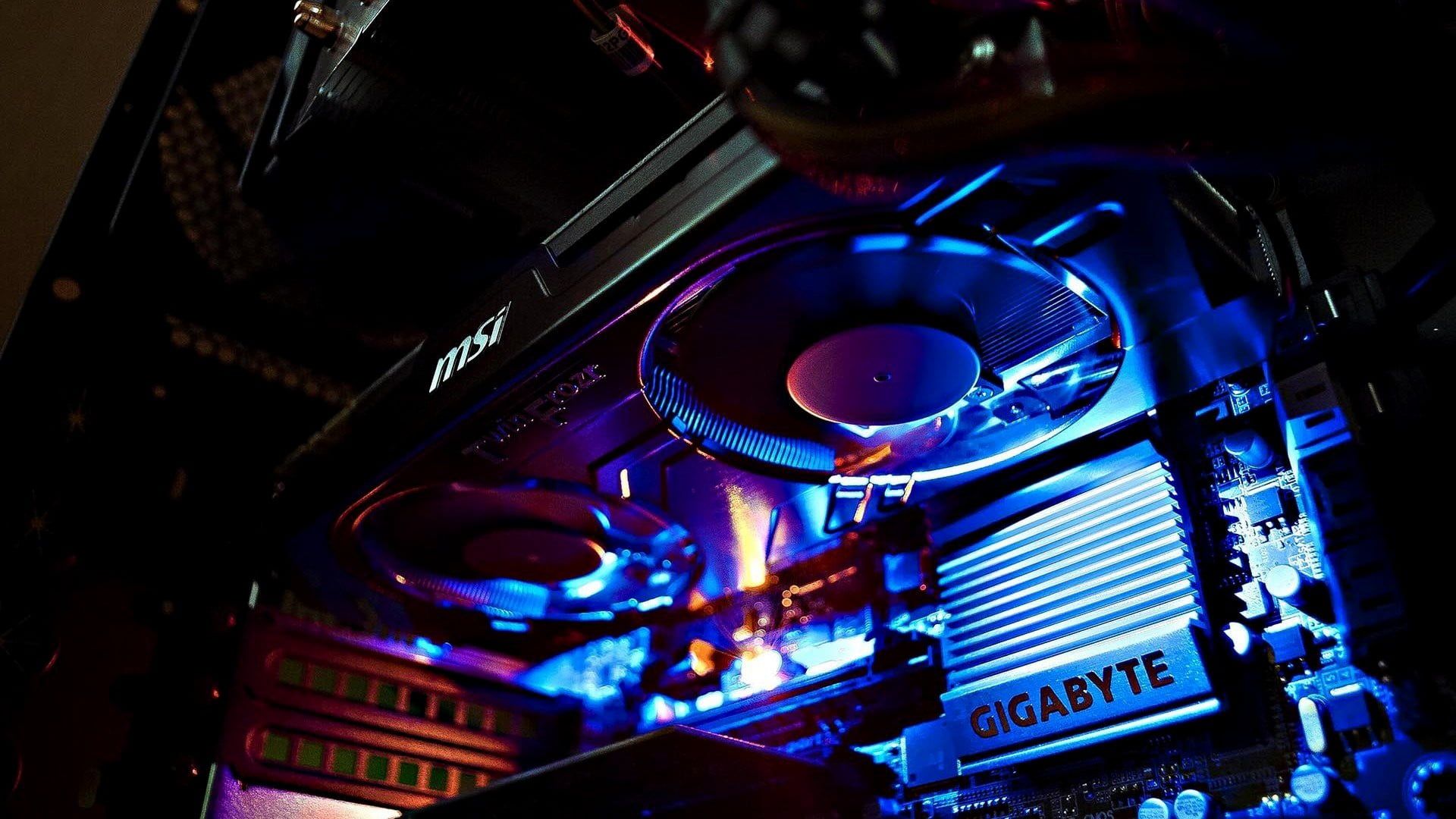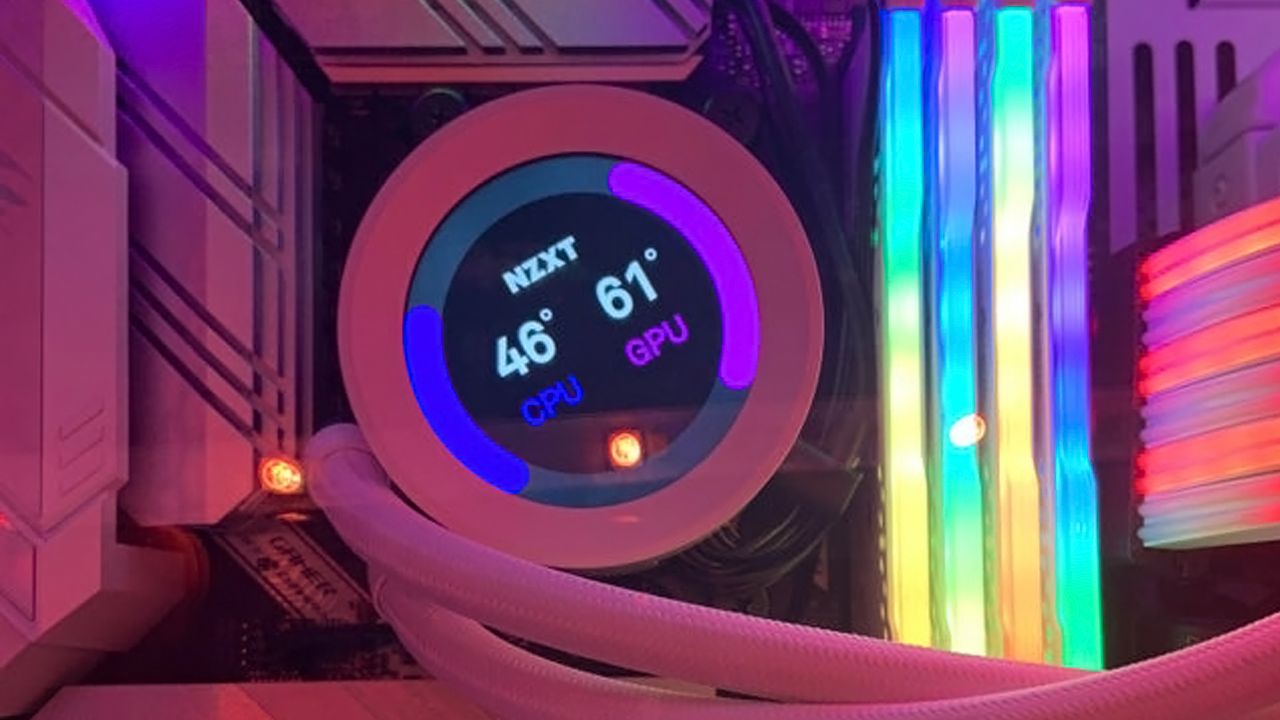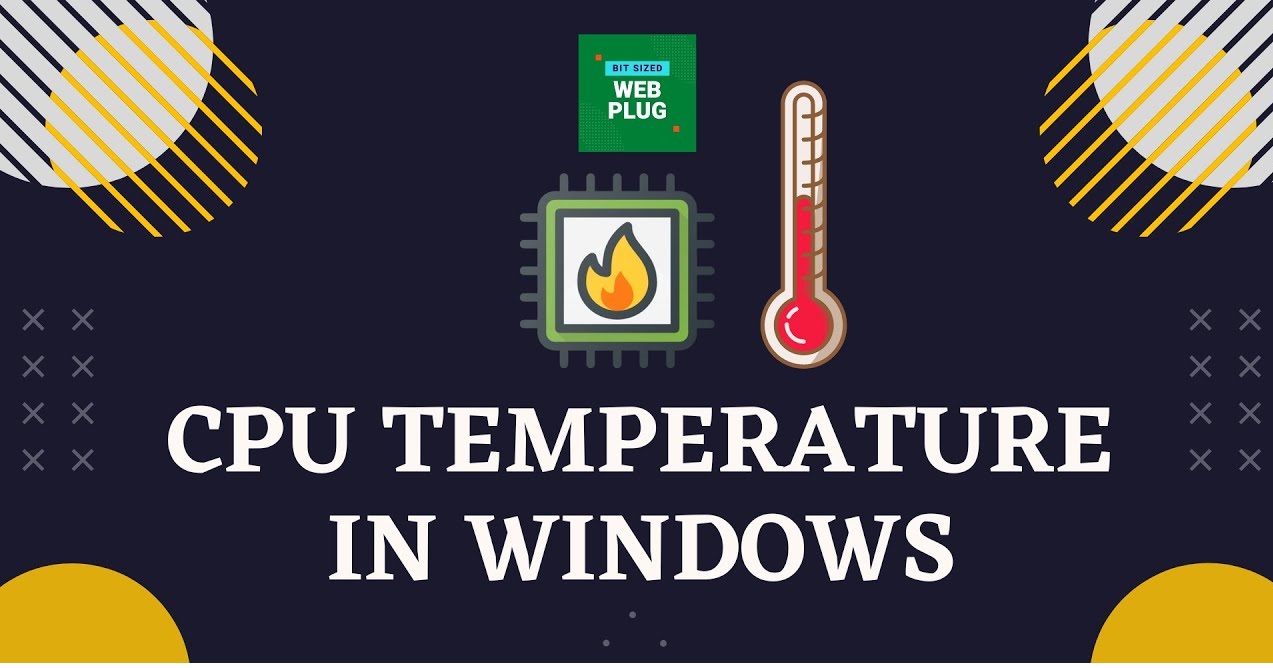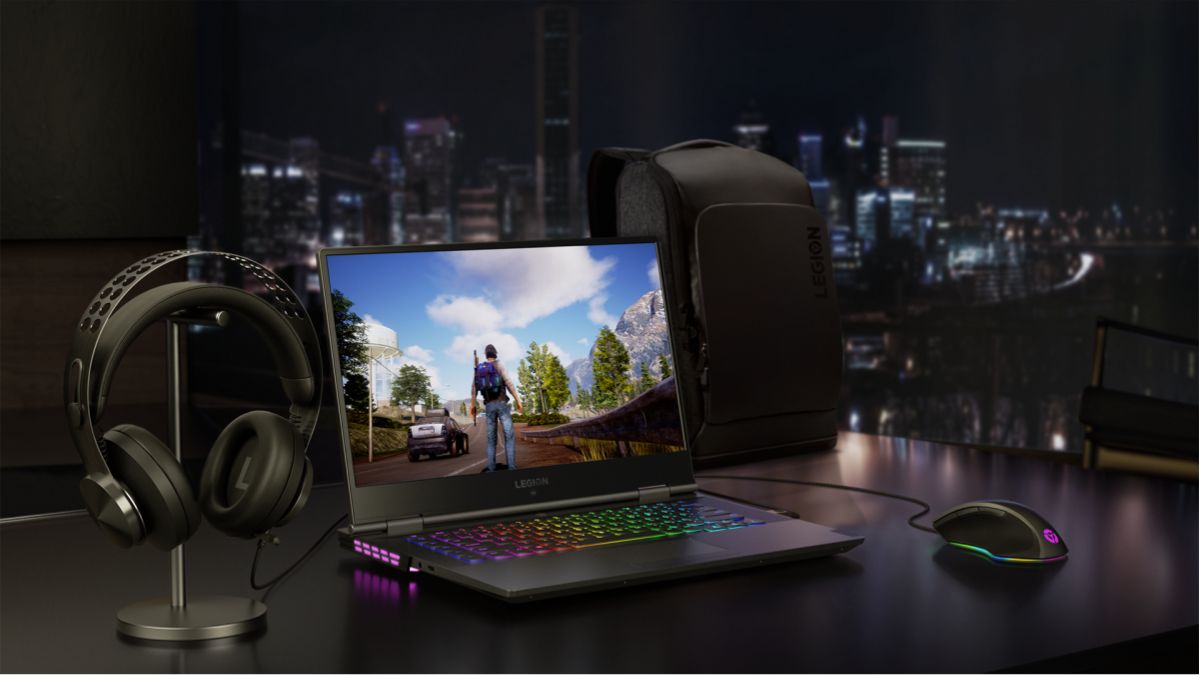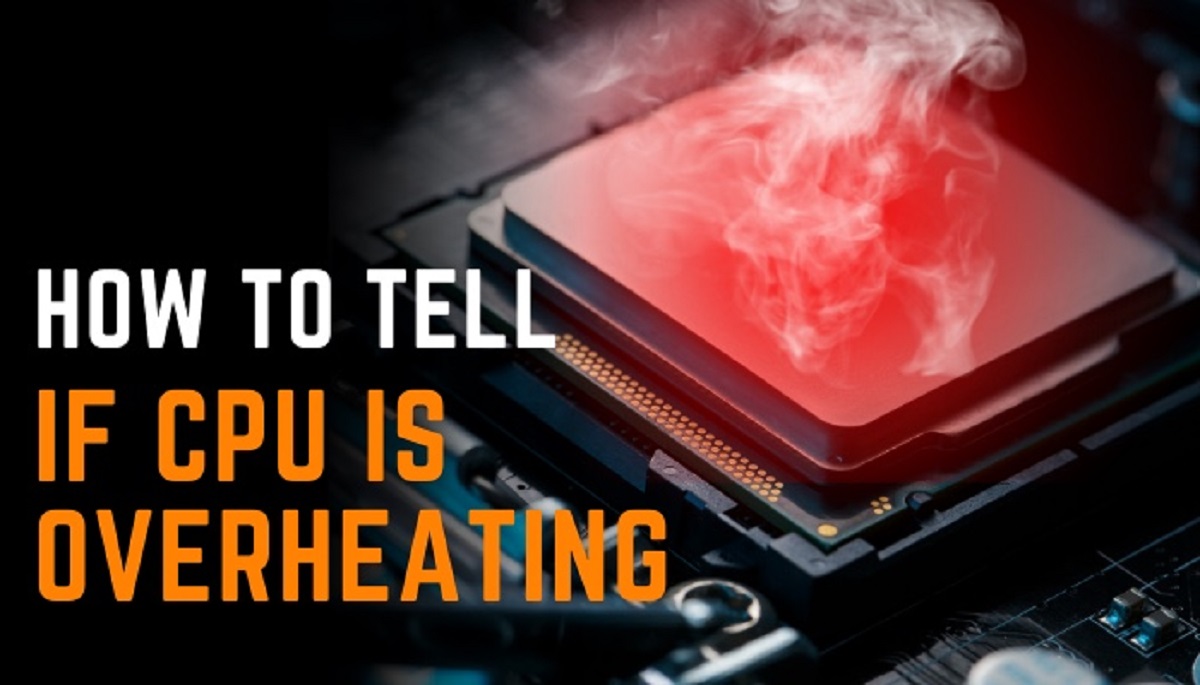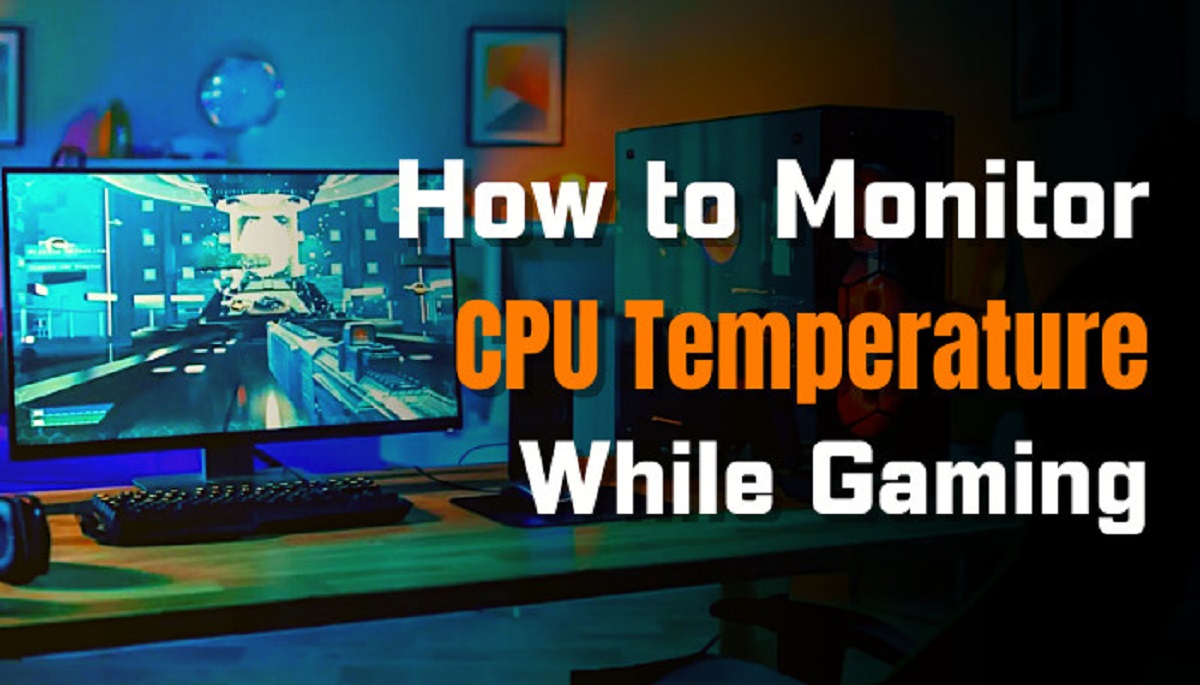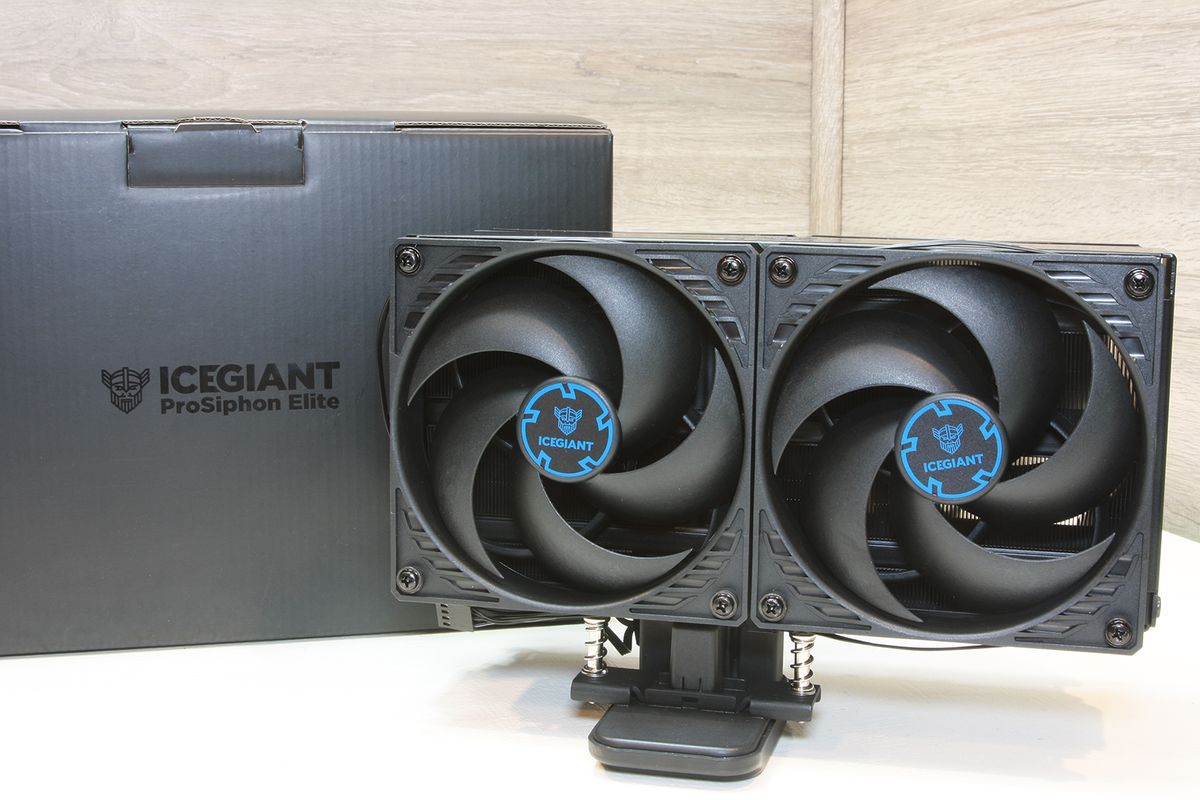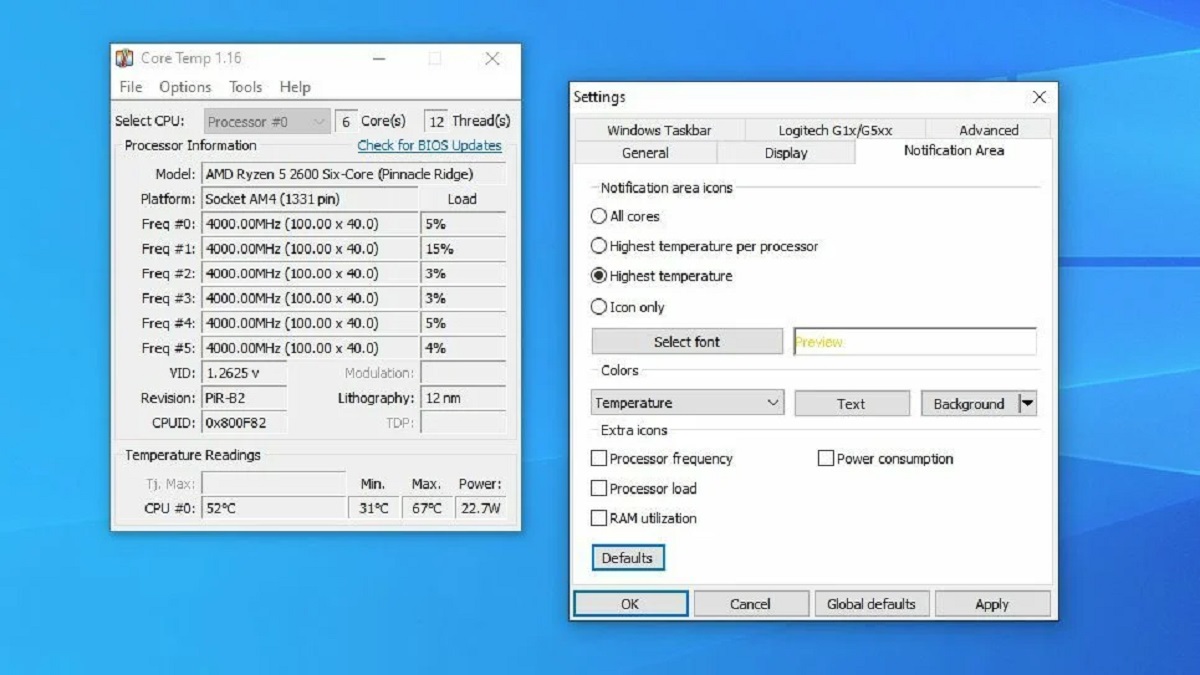What Is A Safe Temp For GPU
When it comes to maintaining the optimal performance of your computer’s graphics processing unit (GPU), keeping an eye on its temperature is of utmost importance. GPUs can generate a significant amount of heat while running graphic-intensive applications or playing demanding video games. Excessive heat can not only lead to decreased performance but also cause long-term damage to your GPU. Therefore, understanding what constitutes a safe temperature for your GPU is essential for preserving its longevity and ensuring its smooth operation.
The safe temperature range for a GPU depends on various factors, including the specific GPU model, cooling system, and ambient temperature. Most GPUs are designed to operate within a temperature range of 60 to 85 degrees Celsius (140 to 185 degrees Fahrenheit) under load. However, it is generally recommended to keep the GPU temperature below 80 degrees Celsius (176 degrees Fahrenheit) to ensure optimal performance and longevity.
Exceeding the safe temperature limits can have detrimental effects on your GPU. Prolonged exposure to high temperatures can cause thermal throttling, where the GPU automatically reduces its performance to prevent overheating. This leads to a decrease in frame rates, sluggish system responsiveness, and even system crashes.
Furthermore, overheating can result in irreversible damage to the GPU components. Excessive heat can degrade the thermal paste that helps in transferring heat from the GPU to the cooling system. Over time, this can cause thermal inefficiencies and lead to permanent damage. In some cases, overheating can even cause the GPU to fail completely, requiring expensive repairs or replacements.
To ensure that you are aware of your GPU’s temperature, it is crucial to monitor it regularly. Many software applications are available that allow you to keep track of your GPU’s temperature in real-time. These tools provide valuable insights into the temperature fluctuations while using your system, enabling you to take necessary measures to prevent overheating.
Preventing GPU overheating involves a combination of proper cooling, system maintenance, and careful usage. Here are some tips to help you maintain a safe temperature for your GPU:
- Ensure your computer has adequate cooling, including proper airflow, fans, and heat sinks.
- Clean the dust and debris from your computer’s components regularly, including the GPU and its cooling system.
- Avoid running demanding applications or games for extended periods without breaks to allow the GPU to cool down.
- Consider using a third-party GPU cooler or upgrading your stock cooling solution if you frequently experience high GPU temperatures.
- Keep your computer’s ambient temperature within a reasonable range by avoiding exposure to extreme heat or cold.
By maintaining a safe temperature for your GPU, you not only ensure optimal performance but also prolong its lifespan. Regular monitoring, cooling maintenance, and responsible usage are crucial in preventing overheating and protecting your investment in your computer’s graphics capability.
Introduction
The graphics processing unit (GPU) is a crucial component in modern computers, responsible for rendering and displaying high-quality graphics and handling demanding tasks, such as video editing and gaming. As the GPU performs these intensive operations, it generates heat, which, if not properly managed, can lead to performance issues and even permanent damage. Understanding what constitutes a safe temperature for your GPU is essential in maintaining its optimal performance and longevity.
Operating temperatures that are too high can negatively impact a GPU’s performance and may cause thermal throttling, where the GPU reduces its speed to prevent overheating and avoid potential damage. Furthermore, prolonged exposure to high temperatures can degrade the thermal paste that helps transfer heat from the GPU to the cooling system, impacting its ability to dissipate heat effectively. This can lead to increased temperatures and potential long-term damage to the GPU.
On the other hand, temperatures that are too low are also not desirable for a GPU’s performance. Extreme cold can cause condensation, leading to moisture buildup and potential damage to the GPU and other components. Therefore, striking the right balance in maintaining a safe operating temperature for your GPU is crucial.
While the safe temperature for a GPU depends on various factors, including the GPU model, cooling system, and ambient temperature, there are general temperature ranges that are considered safe for most GPUs. It is important to note that these ranges can vary, and it is always recommended to consult your GPU manufacturer’s specifications for the specific safe temperature limits.
In this article, we will explore the factors that affect GPU temperatures, the importance of maintaining safe temperatures, how to monitor GPU temperatures, and the recommended safe temperature ranges for different GPUs. Additionally, we will discuss the risks of GPU overheating and provide tips on preventing GPU overheating.
By understanding and implementing the necessary steps to maintain a safe temperature for your GPU, you can ensure optimal performance, longevity, and reliability. So, let’s delve deeper into the world of GPU temperatures and the best practices for keeping them in check.
Understanding GPU Temperatures
GPU temperatures refer to the measurement of the heat generated by the graphics processing unit. As the GPU processes complex graphics and performs demanding tasks, it generates heat, much like any other electronic component. Understanding GPU temperatures is crucial in ensuring the optimal performance and longevity of your GPU.
The temperature of a GPU is influenced by several factors, including the workload on the GPU, ambient temperature, cooling system efficiency, and the design of the GPU itself. GPUs are designed to handle a certain level of heat, and they include built-in mechanisms to control temperature, such as thermal throttling, which reduces performance to protect the GPU from overheating.
GPU temperatures are typically measured in degrees Celsius (°C) or Fahrenheit (°F). Monitoring software or utilities can provide real-time temperature readings, allowing users to keep track of their GPU’s temperature while running intensive applications or playing games.
It is important to note that GPU temperatures can vary based on the specific GPU model. High-end GPUs designed for gaming or professional applications often have higher power requirements, which results in higher heat output and potentially higher operating temperatures compared to lower-end or integrated GPUs.
Efficient cooling is vital in maintaining safe GPU temperatures. Most GPUs come equipped with cooling systems, typically consisting of a fan and heatsink combination. The fan helps in dissipating heat from the GPU, while the heatsink absorbs and spreads the heat across a larger surface area for more effective cooling. Some high-end GPUs may feature advanced cooling solutions, such as liquid cooling or multiple fans, to provide enhanced heat dissipation.
Ambient temperature also plays a role in GPU temperatures. Higher ambient temperatures, especially in poorly ventilated or warmer environments, can lead to higher GPU temperatures even under normal workload conditions. It is important to ensure proper airflow within your computer case and keep it in a well-ventilated area to help maintain lower ambient temperatures for better GPU temperature management.
By understanding the factors that influence GPU temperatures and monitoring them regularly, you can take the necessary steps to maintain optimal temperatures and ensure the longevity and performance of your GPU.
Importance of Maintaining Safe GPU Temperatures
Ensuring the safe temperature of your GPU is crucial for preserving its overall performance, reliability, and longevity. Excessive heat can have a detrimental impact on the functionality and lifespan of your graphics processing unit. Understanding the importance of maintaining safe GPU temperatures can help you avoid potential issues and maximize the lifespan of your GPU.
Optimal Performance: GPU temperatures directly affect performance. When a GPU operates within safe temperature limits, it can maintain its peak performance, delivering smooth and responsive graphics rendering. However, as temperatures rise, the GPU may adjust its clock speeds to prevent overheating, resulting in reduced performance. This can lead to frame rate drops, stuttering, and lag during gaming or other GPU-intensive tasks.
Longevity and Stability: Consistently exposing your GPU to high temperatures can cause long-term damage and significantly reduce its lifespan. Heat can degrade the components of the GPU, such as the integrated circuits, capacitors, and other delicate electronic parts. Over time, this degradation can lead to permanent damage or even complete failure of the GPU. By maintaining safe temperatures, you can ensure the longevity and stability of your GPU for years to come.
Prevention of Thermal Throttling: When a GPU reaches its maximum safe operating temperature, it activates a self-protection mechanism known as thermal throttling. Thermal throttling reduces the GPU’s clock speeds to lower the heat output and prevent further temperature increase. While thermal throttling helps protect the GPU from overheating, it also results in decreased performance. By maintaining safe GPU temperatures, you can avoid triggering thermal throttling and ensure consistent performance without unnecessary slowdowns.
System Reliability: Overheating GPUs can put a strain on the overall system and affect the stability of your computer. Excessive heat can cause system crashes, freezes, and unexpected shutdowns. These issues not only disrupt your workflow but can also lead to data loss or corruption. By keeping your GPU temperatures within safe limits, you can promote system reliability and minimize the risk of these unwanted complications.
Warranty Coverage: Warranty coverage on GPUs often depends on whether the GPU has been used within specified temperature ranges. If your GPU fails due to overheating and you have been operating it outside the recommended temperature limits, you may void your warranty. Maintaining safe GPU temperatures ensures that your GPU remains eligible for warranty coverage, giving you peace of mind and potential cost savings in case of any unforeseen issues.
By understanding the importance of maintaining safe GPU temperatures, you can take the necessary steps to monitor and control temperatures effectively. This will not only enhance the performance and longevity of your GPU but also contribute to a more stable and reliable computing experience.
Factors Affecting GPU Temperatures
Several factors contribute to the temperatures at which a graphics processing unit (GPU) operates. Understanding these factors can help you effectively manage and control the temperature of your GPU for optimal performance and longevity.
1. Workload: The workload being handled by the GPU plays a significant role in determining its temperature. Running graphically intensive applications, such as 3D rendering software or demanding video games, puts a heavy load on the GPU, resulting in increased heat generation. More demanding tasks require the GPU to work harder, thus generating more heat and potentially increasing the temperature.
2. GPU Design: Different GPU models have varying designs and specifications that impact their thermal performance. High-end GPUs designed for gaming or professional workloads often come with advanced cooling features, such as multiple fans or larger heatsinks, to efficiently dissipate heat. On the other hand, lower-end or integrated GPUs may have simplified cooling systems that may not be as effective at heat dissipation.
3. Cooling System: The effectiveness of the cooling system plays a crucial role in regulating GPU temperatures. GPUs typically come with built-in cooling mechanisms, such as fans and heatsinks, to absorb and dissipate heat. Aftermarket cooling solutions, such as third-party fans or liquid cooling, can also be installed to provide enhanced cooling performance. The quality, cleanliness, and proper functioning of these cooling systems directly impact the GPU’s ability to maintain safe temperatures.
4. Ambient Temperature: The ambient temperature of the environment in which the computer is located also affects GPU temperatures. Higher ambient temperatures can make it more challenging for the cooling system to dissipate heat, resulting in higher GPU temperatures. It is important to ensure that the computer is kept in a well-ventilated area with proper airflow to help maintain lower ambient temperatures.
5. Overclocking: Overclocking is the process of increasing the clock speed or voltage of the GPU to achieve higher performance. While overclocking can boost performance, it also increases heat generation. Overclocking should be done cautiously, considering the GPU’s cooling capabilities and temperature limits, to prevent excessive heat buildup and potential damage to the GPU.
6. Dust and Debris: Dust accumulation on the GPU and its cooling components can obstruct airflow, reducing their ability to dissipate heat effectively. Regular cleaning and maintenance of the GPU and its cooling system are essential to prevent dust and debris buildup, ensuring optimal cooling performance and maintaining safe temperatures.
By considering these factors and implementing appropriate measures, such as monitoring workload, ensuring proper GPU design and cooling, managing ambient temperature, cautious overclocking, and regular cleaning, you can effectively manage and control the temperature of your GPU. This will contribute to improved performance, stability, and longevity of your graphics processing unit.
How to Monitor GPU Temperatures
Monitoring the temperature of your graphics processing unit (GPU) is crucial in ensuring that it operates within safe limits and performs optimally. Fortunately, there are several methods available to monitor GPU temperatures effectively. Let’s explore some of the commonly used techniques:
1. GPU Monitoring Software: Many software applications are specifically designed to monitor GPU temperatures in real-time. These programs provide comprehensive information about various aspects of your GPU, including temperature, clock speed, fan speed, and more. Popular GPU monitoring software options include MSI Afterburner, HWMonitor, GPU-Z, and SpeedFan. These tools offer easy-to-understand interfaces and real-time temperature graphs, allowing you to keep a close eye on your GPU’s temperature fluctuations.
2. Built-in GPU Monitoring: Some GPU manufacturers provide their own monitoring software along with their graphics drivers. For instance, AMD offers the Radeon Software, which includes temperature monitoring features. NVIDIA provides the NVIDIA Control Panel, which allows you to monitor GPU temperatures and other performance metrics. These built-in monitoring options offer a convenient way to keep track of your GPU’s temperature without the need for installing additional software.
3. System Monitoring Software: In addition to GPU-specific monitoring software, there are system monitoring programs that provide comprehensive information about various components of your computer, including the GPU. Tools like HWiNFO, NZXT CAM, and Open Hardware Monitor can monitor GPU temperatures along with other vital system statistics such as CPU temperature, system load, and fan speeds. These all-in-one monitoring solutions give you a holistic view of your system’s performance and allow you to identify any potential issues.
4. On-Screen Display (OSD): Some GPU monitoring software, like MSI Afterburner, offer an on-screen display feature that overlays the temperature and other performance metrics directly onto your screen while you are using your computer. This feature is particularly useful during gaming or other full-screen activities, as it allows you to monitor GPU temperatures in real-time without switching to another program or interrupting your workflow.
5. Hardware Monitoring Devices: For enthusiasts and professionals who require more accurate and detailed temperature monitoring, dedicated hardware monitoring devices can be used. These devices, such as thermal probes or temperature sensors, can be installed directly on the GPU or placed in proximity to it to provide precise temperature readings. Hardware monitoring devices are ideal for overclockers or users who require precise temperature monitoring for specific purposes.
Regardless of the method you choose, monitoring your GPU temperatures is crucial for maintaining optimal performance and preventing overheating. Regularly checking and monitoring your GPU temperatures will allow you to take necessary measures, such as adjusting fan speeds, optimizing cooling, or reducing workload, to ensure that your GPU operates within a safe temperature range.
Safe Temp Ranges for Different GPUs
The safe temperature range for a graphics processing unit (GPU) can vary depending on the specific GPU model, manufacturer, and cooling capabilities. While it is always recommended to consult your GPU manufacturer’s specifications for the exact safe temperature limits, here are some general guidelines for safe temperature ranges:
1. Entry-Level and Integrated GPUs: Entry-level or integrated GPUs, which are commonly found in budget-friendly laptops or low-power systems, tend to have lower power requirements and generate less heat. These GPUs typically have a safe temperature range of around 60 to 70 degrees Celsius (140 to 158 degrees Fahrenheit) under load. However, it is still advisable to keep the temperature below 75 degrees Celsius (167 degrees Fahrenheit) to ensure safer operation.
2. Mid-Range GPUs: Mid-range GPUs offer a balance between performance and power consumption. They are commonly found in gaming PCs and workstations. The safe temperature range for mid-range GPUs typically falls between 60 to 85 degrees Celsius (140 to 185 degrees Fahrenheit) under load. However, it is generally recommended to keep the temperature below 80 degrees Celsius (176 degrees Fahrenheit) for optimal performance and longevity.
3. High-End and Enthusiast GPUs: High-end and enthusiast-grade GPUs, designed for gaming enthusiasts, professionals, and content creators, are usually more powerful and generate more heat. These GPUs often come with advanced cooling solutions, allowing them to handle higher temperatures. The safe temperature range for high-end and enthusiast GPUs can range from 60 to 90 degrees Celsius (140 to 194 degrees Fahrenheit) under load. However, it is advisable to keep the temperature below 85 degrees Celsius (185 degrees Fahrenheit) for prolonged usage and to avoid thermal throttling.
It is important to note that these temperature ranges are approximate guidelines and may vary depending on factors such as model-specific design, thermal dissipation capabilities, and manufacturer recommendations. Some GPUs may have higher safe temperature limits due to their robust cooling solutions or specific design considerations.
It is always recommended to monitor your GPU temperatures using software or hardware monitoring tools to ensure that they are within the safe temperature range. Regularly checking and monitoring your GPU temperatures will allow you to identify any potential thermal issues and take necessary measures to prevent overheating, such as optimizing the cooling system, cleaning dust build-up, or adjusting fan speeds.
By keeping your GPU within the safe temperature range, you can ensure optimal performance, stability, and longevity, ultimately maximizing your computing experience.
Risks of Overheating
Allowing your graphics processing unit (GPU) to operate at high temperatures for extended periods can pose several risks to its performance, longevity, and overall system stability. Understanding the risks associated with GPU overheating can help you take proactive measures to prevent potential damage. Here are some of the key risks:
1. Reduced Performance: Overheating can significantly impact the performance of your GPU. When the GPU reaches high temperatures, it may activate a built-in self-protection mechanism called thermal throttling. Thermal throttling reduces the GPU’s clock speed to lower heat output, preventing further temperature increase. This reduction in clock speed results in decreased performance, causing lower frame rates, stuttering, and sluggishness in graphics-intensive applications or games.
2. System Instability: Overheating can lead to system instability, causing crashes, freezes, or unexpected shutdowns. High GPU temperatures put a strain on the overall system, as they can affect other components and disrupt the normal operation of your computer. These stability issues can result in data loss, file corruption, and interruptions in your work or gaming sessions.
3. Component Damage: Consistently operating your GPU at high temperatures can cause long-term damage to its sensitive electronic components. Overheating can lead to thermal stress, which can degrade the performance and reliability of the GPU over time. Components such as integrated circuits, capacitors, and connectors are particularly vulnerable to heat-related damage. Overheating can also deteriorate the thermal paste between the GPU and the cooling solution, leading to inefficient heat dissipation and potential long-term damage.
4. Increased Power Consumption: Overheating can also result in increased power consumption. When the GPU works under high temperatures, it requires more power to function properly. This increased power consumption can lead to higher electricity bills and put additional strain on your computer’s power supply unit.
5. Voided Warranty: Many GPU manufacturers have specific temperature limits outlined in their warranty terms and conditions. If your GPU fails due to overheating and you have been operating it outside the recommended temperature ranges, you may void your warranty. It is essential to ensure that your GPU operates within the specified temperature limits to retain warranty coverage and avoid any potential costs associated with repairing or replacing a defective GPU.
By being aware of the risks of GPU overheating, you can take the necessary precautions to mitigate these risks and maintain a safe operating temperature for your GPU. Regularly monitoring your GPU temperatures, ensuring proper cooling, keeping your system clean and well-ventilated, and avoiding excessive overclocking can all help in preventing GPU overheating and the associated risks.
Tips to Prevent GPU Overheating
Preventing GPU overheating is crucial for maintaining optimal performance, longevity, and stability. By implementing the following tips, you can effectively keep your graphics processing unit (GPU) temperature in check and prevent overheating:
1. Proper Cooling: Ensure that your computer has adequate cooling to dissipate heat generated by the GPU. This includes proper airflow within the system, proper placement of case fans, and ensuring that the GPU’s cooling system, such as fans or heatsinks, is clean and free from dust or debris. Regularly clean the GPU and its cooling components to prevent airflow obstruction and heat buildup.
2. Improve Case Ventilation: Poor airflow within the computer case can contribute to higher GPU temperatures. Optimize your case ventilation by ensuring there are no obstructions to the intake and exhaust fans. Use cable management techniques to keep cables organized and out of the way, allowing air to flow freely. Consider installing additional case fans, if necessary, to improve overall airflow.
3. Maintain Ambient Temperature: Keep your computer in a well-ventilated area and within a reasonable ambient temperature range. Excessive heat in your computer’s surroundings can raise the temperature inside the case, impacting GPU temperatures. Avoid placing your computer near heat sources or in direct sunlight, and aim to keep the room temperature at a comfortable level.
4. Avoid Overclocking: Overclocking, while it can provide a performance boost, increases the heat output of the GPU. Avoid excessive overclocking or pushing the GPU beyond its recommended limits, as it can lead to higher temperatures and potential instability. If you do overclock, ensure that you pay close attention to the GPU temperatures and test for stability to prevent overheating.
5. Take Breaks During Intensive Tasks: When running demanding applications or playing graphically intensive games, take periodic breaks to allow the GPU to cool down. Prolonged, continuous usage of the GPU at maximum load can lead to higher temperatures. By providing breaks, you give the GPU a chance to lower its temperature, reducing the risk of overheating.
6. Consider Aftermarket Cooling Solutions: If you frequently notice high GPU temperatures, consider upgrading to aftermarket cooling solutions. This can include installing additional case fans, upgrading the GPU’s stock cooling system, or even using liquid cooling. Aftermarket cooling solutions provide enhanced heat dissipation and can help maintain lower GPU temperatures under heavy load.
7. Monitor GPU Temperatures: Regularly monitor your GPU temperatures using software utilities or built-in monitoring options. This way, you can keep an eye on temperature fluctuations and take immediate action if the temperatures rise above safe limits. Many monitoring tools also allow you to set up temperature alerts or fan speed profiles to automatically adjust cooling performance.
By implementing these tips, you can effectively prevent GPU overheating and maintain optimal performance, stability, and longevity for your graphics processing unit. A well-cooled GPU ensures a smooth computing experience, prolongs the life of your GPU, and reduces the risk of performance issues or system crashes caused by overheating.
Conclusion
Maintaining a safe temperature for your graphics processing unit (GPU) is of utmost importance for optimal performance, longevity, and stability. By understanding the factors that affect GPU temperatures, the risks of overheating, and implementing preventive measures, you can ensure that your GPU operates within safe limits.
From understanding the safe temperature ranges for different GPU models to monitoring GPU temperatures using software utilities or hardware devices, you have several methods at your disposal to keep a close watch on your GPU’s temperature. By regularly monitoring temperatures and taking necessary actions such as improving cooling, maintaining proper airflow, avoiding excessive overclocking, and cleaning the GPU and its cooling components, you can prevent overheating and safeguard your GPU from potential damage or performance degradation.
Failure to maintain safe GPU temperatures can result in reduced performance, system instability, component damage, increased power consumption, and even voided warranty coverage. These risks highlight the importance of prioritizing proper cooling and temperature management for your GPU.
By following the tips and best practices outlined in this article, you can ensure that your GPU remains cool and operates optimally throughout its lifespan. Regular monitoring, proper cooling, and responsible usage are key to preventing GPU overheating and maximizing the performance and longevity of your graphics processing unit.
Remember, each GPU model may have specific temperature limits and recommendations provided by the manufacturer. Therefore, it is essential to consult the GPU manufacturer’s specifications and guidelines for the precise safe temperature ranges applicable to your specific GPU.
By taking proactive measures to maintain a safe temperature for your GPU, you can enjoy smooth graphics performance, avoid unnecessary slowdowns or crashes, and extend the lifespan of your graphics card, ultimately enhancing your overall computing experience.







